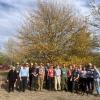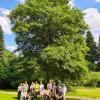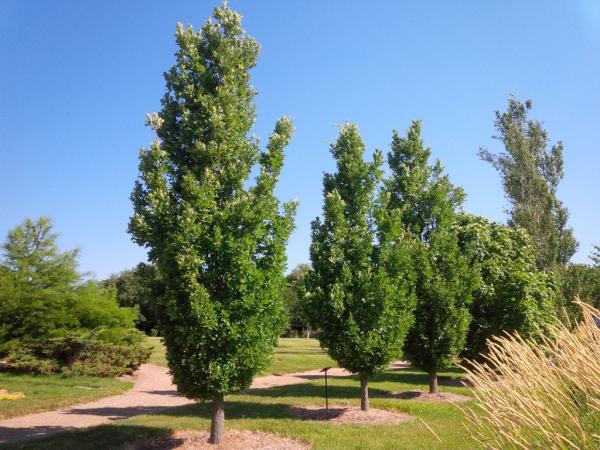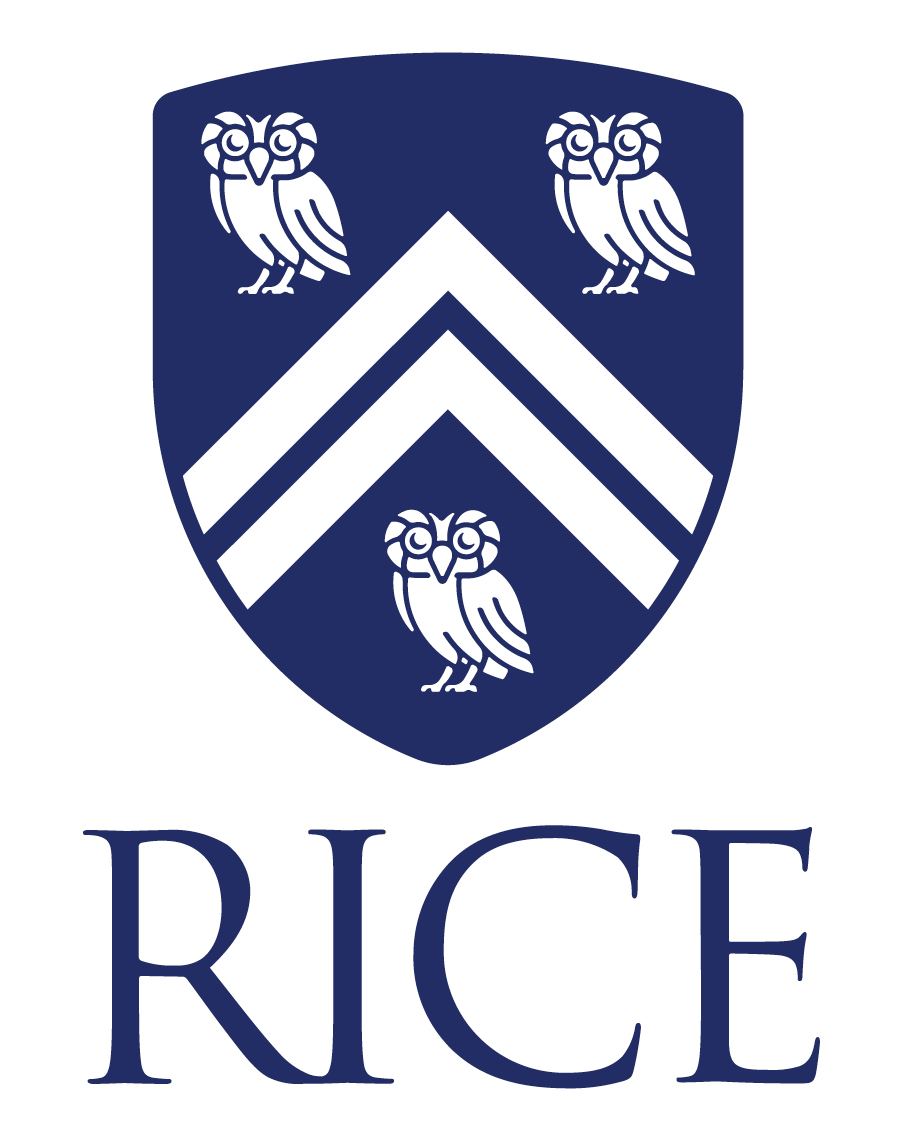Editor's Picks
Plant Focus
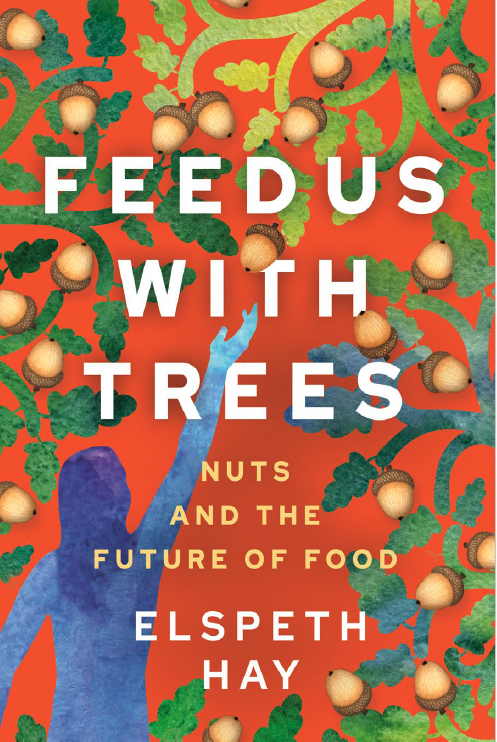
Feed us with Trees
Nuts and the Future of Food
Elspeth Hay
New Society Publishers, 2025
ISBN 9780865719729
A thread runs through some recent posts and newsletter articles, and it’s edible.
It starts, probably, with Marcie Mayer’s 2014 description of her project to restore a dormant industry on the Greek island of Kea, to export acorn caps for leather tanning, and to process the nuts into acorn flour. The oak in question is the Valonia oak, Quercus macrolepis (for some authors a subspecies of Q. ithaburensis).
In 2017 Antoine Kremer raised the possibility that early human migration through Europe facilitated the dispersal of acorns, which were transported as a food source. The next year saw the publication of an encyclopedic review, by Béatrice Chassé, of the evidence for acorns as food in the Old World. It addressed the important question of why acorn consumption was abandoned in favor of cereals and concluded that perhaps that was more driven by ideology than by practical considerations.
Attention then moved to the New World, in 2021, as Nanebeh Lyndon, Vincent Randall and Sara Souther described the importance of the acorns of Emory oak, Q. emoryi, to the Apache people as a staple food and for use in traditional cultural practices. The Emory oak groves of Arizona are at risk, possibly through overgrazing by cattle, fire suppression, and increasing aridity. In response to this the Emory Oak Collaborative Tribal Restoration Initiative aims to unite Traditional Ecological Knowledge (TEK) with western science and land management to ensure the long-term availability of acorns to Western Apache Tribes.
Back in Europe in the same year, Joan Montserrat described his efforts, with Francesc Ribera, to locate and catalogue individual holm oaks (Q. ilex) that yield truly sweet acorns, with a view to grafting stock and raising plants for sale in their nursery in Catalonia. Their search has taken them to the dehesa of southwest Spain and the equivalent montado of Portugal, and to the island of Mallorca.
The 10th IOS conference was held in 2022 in Las Cruces, New Mexico. It featured a practical workshop with Hendrik Brand on “The Use of Acorns as a Staple Part of Our Diet”.
After a detour to sample AcornBars in 2025 we arrive in Scotland, where a comment from Henry Studholme raised the possibility that the spread of pedunculate oak, Q. robur, and sessile oak, Q. petraea, in Britain could be better explained by human transport than by jays.
Finally, on October 8, at the forthcoming IOS conference at Oaxaca, Mexico, Khaoula El Katib of Abdelmalek Essaadi University will present “A History of Acorn-Based Food in Morocco”.
And so we come to Elspeth Hay’s book. It isn’t exclusively about oaks, but it begins and ends with them, and returns to them frequently. It recounts her gradual realization that for thousands of years until relatively recently, people in the Northern Hemisphere had eaten acorns and other nuts as a staple part of their diet. Moreover, the food supply from oaks and other trees had been sustainable, to the point that it wasn’t immediately obvious why humanity had switched to cereal-based arable agriculture: see Béatrice Chassé’s thoughts, touched on above.
In parallel with this dawning revelation, Elspeth began to feel something close to despair at the unsustainable nature of agriculture in the USA and the effect that that was having on the environment, on farmers themselves, and on consumers of farm produce, with the US government estimating that about half of the population suffer from diseases related to diet. To Elspeth, we “seemed to be the only species without a habitat; the only species without wild, abundant foods; the only species destroying our home planet and the vibrant communities of life that cover it.” Did our need to eat inevitably lead to the loss of the wild places that were home to the oaks? Was there a connection between these two threads, one that offered a way forward?

Her research led her to the concept of oak savannas: plant communities characterized by open grassy areas interspersed with large oaks and shrubs. Once a common and near-ubiquitous biome in the USA, it is now much reduced in extent and restricted mainly to the border zone between forest and prairie in the Midwest; parts of Arizona, New Mexico, and West Texas; and western parts of California, Oregon, and Washington. The dominant trees in all of these savannas were oaks of various species, but they were also home to chestnuts and beech, wild apples, hazelnuts, and various Prunus species, while the herb layer was grazed by deer, turkeys, and rabbits. To put it another way, the savannas were capable of providing excellent human food. At first Elspeth assumed that eating acorns and other nuts as a staple provider of fats and starch was something resorted to only when or where growing grain wasn’t practical, but further research showed that this wasn’t the case: nuts such as acorns, chestnuts, and hazelnuts have historically been staple crops in most of the temperate world, and, in many places, more common than grains.
She needed to speak to some people whose relationship with tree crops was still at least partially intact, and this took her to Northern California and to the Karuk people of the Klamath River basin, whose traditional staple diet consisted mainly of salmon and acorns.
Reproduced under Creative Commons Attribution-Share Alike License 3.0
Some contemporary writing on oak savannas emphasizes the role of naturally ignited wildfires in “freezing” succession that would otherwise result in oak high forest. What conversations with the Karuk made clear was that low-intensity, carefully controlled fires were a management tool traditionally employed to the same end. Over 75 percent of the plants, fungi, and animals that the Karuk people relied on required fire for their reproduction. “In the Karuk stories, instead of being ‘born bad’, we were vital to the natural world. We were the fire animal, and we produced food like acorns in abundance for other species”. In these stories we humans had a habitat after all—and responsibilities.
In 1905 the U.S. Forest Service took over the Karuk people’s entire 1.04-million-acre ancestral territory and almost immediately made these cultural burns illegal. Without them, natural succession could proceed to a climax, with Douglas fir (Pseudotsuga menziesii) and other conifers shading out the old tan oak (Notholithocarpus densiflorus) that the indigenous people had relied on for their acorns. Flammable duff was allowed to accumulate to feed the wildfires that would almost inevitably result.
From here the book widens its scope to consider in more detail how cereal-based agriculture came to oust the indigenous nut-based regimes. Was it simply a question of the higher yields needed to feed an expanding population? Not necessarily, it seems. So was it a deep-seated cultural difference between the mindsets of indigenous people and European immigrants? Elspeth travelled to the Appalachians to investigate what had been a nut-based rural economy embraced by the immigrant community: the harvesting, trading, and processing of chestnuts. She found that the chestnut woodlands were not in private ownership but were held in common. Anyone owning a fenced plot of land could graze their livestock in the neighboring woods and gather chestnuts from them. The imported chestnut blight (Cryphonectria parasitica) would spell the end of that economy, but so did the passing of laws aimed at economic and racialized labor control.
Elspeth travelled to England, the land of her maternal ancestors, to investigate the matter of common land and the loss of much of it through the Enclosure Movement, by which the landed gentry were permitted to enclose large tracts of land formerly subject to common rights, and thereby to cause the forced emigration of the peasantry—to places such as Appalachia.
The law locks up the man or woman
Who steals the goose from off the common
But leaves the greater villain loose
Who steals the common from off the goose.
Could this be the explanation for the mindsets of the European Immigrants? “Some lines of grieving Euro-Americans tried to recreate their lost commons in the New World. But others perpetuated the suffering, seeking some perverse sort of justice. As U.S. historian Roxanne Dunbar-Ortiz has observed, ‘The traumatized souls thrown off the land, as well as their descendants, became the land-hungry settlers enticed to cross a vast ocean with the promise of land.’”

Reproduction licensed under the Creative Commons Attribution-Share Alike 4.0 International license.
On a mission of personal reconnection, Elspeth learned basketry and the traditional European woodcraft of coppicing and pollarding that would provide the necessary materials; she gained some qualifications that allowed her to take part in the controlled burns that are essential to maintain wooded land in the mid-succession phase that favors the acorn and nut crops; she learned to work with biochar to improve her sandy Cape Cod soils; and, inevitably, she learned to process and cook with chestnuts and acorns.
This entrancing and thought-provoking book ends with the author looking back at her journey of discovery and contemplating what the future holds for her. “I have a home, and I have a job to do here: one first shown to me . . . on the other side of this continent, one involving flame and a long list of species—with oaks at the center—who need us as their kin.” Welcome, Elspeth. You have friends here.

